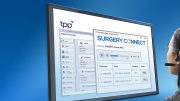Healthcare systems across the US have lately shown remarkable interest in the digital sphere, specifically telemedicine. The utilisation of telemedicine has rapidly increased over the years and it is now employed in all aspects of healthcare – inpatient care, outpatient care, workplaces, nursing home care, and consumer homes.
Today, almost 70% of providers use some sort of telehealth or telemedicine tool, and 71% of people prefer to search for health-related information using a voice assistant.
Over the past few decades, the healthcare industry has increasingly engaged and, to a certain degree, driven technological innovation and advancements. Consequently, telemedicine has metamorphosed into what it is today.
In this piece, we will be looking at a few ways innovation in telemedicine has improved patient satisfaction and emergency department utilisation in hospitals.
1) Improving ER Patient Flow
It is well known that long emergency room wait times are a tenacious challenge for health systems and hospitals across the country. The rate of emergency room visits has increased significantly over recent decades in the U.S., rising from 360 visits per 1,000 residents in 1995 to 445 in 2017, according to a report released recently by Autoinsurance.org.
With patient volume in emergency departments expected to increase further in the next few years as sicker, more complex patients drive up ED care, it has been predicted that this challenge of long ER wait times will only grow further.
So what should you do to manage the rising ED demand? The answer is simple- deploy a telemedicine solution depending on the goal of your healthcare organization.
Physician leaders at Milwaukee-based Aurora Health Care recently leveraged one such telemedicine solution with the objective of ameliorating patient flow in its emergency rooms. The overall goal behind this move is that of amplifying efforts toward patient care and providing a better patient experience. The ED solution, a tele-triage approach, was deployed first at Aurora Sinai Medical Center in December of 2017.
“We now see over 60,000 patients a year, and just a couple years ago, we were under 50,000 patients a year. So we were seeing a gradual increase in our door-to-provider times, and our overall length of stay, so we needed to come up with a solution to help address our increased demand,” – Paul Coogan, M.D., president of Aurora Emergency Services and an emergency department physician at Aurora Sinai.
2) Digital Stroke Care
A person experiencing a stroke loses anywhere around 2 million brain cells every minute when a rupture or blood blockage deprives the brain of oxygen. Unfortunately, it is difficult to comprehend without a CT scan whether the patient has a bleed or a block, and giving the wrong treatment can be lethal.
Telemedicine is streamlining cardiac care like never before and improving patient satisfaction and outcomes at the same time. Telestroke programs connect regional hospitals with a neurological expert who can speedily assess a CT image and guide the physician on-site in the right direction. These programs have drastically improved patient outcomes and they also reduce the door-to-treatment time.
New York- Presbyterian took this technology one step further by coming up with a Mobile Stroke Treatment Unit (MSTU). This specialized emergency vehicle has CT imaging ability onboard, is staffed by a neurologist, and is dispatched by the New York City 911 System through the FDNY directly to a patient the moment he/she displays signs of a stroke. The said unit contains medications specific to treating and diagnosing strokes, enabling the team to send the right drug straight away upon diagnosis.
3) Triaging Based On Prognostic Criteria
A large number of patients with kidney stones return to the ED a number of times due to repeating symptoms. Patients then tend to receive duplicate imaging studies and are often admitted to the hospital. Once admitted, most physicians and patients expect resolution preceding discharge through potentially futile surgical care for simple stones.
According to one recent report, most ED visits don’t require immediate attention. In order of increased severity, visits are segregated as – non-urgent, semi urgent, urgent, emergent, emergent and immediate. Additionally, only 9% of emergency department visits are categorized as “emergent,” while 1% require immediate attention. The majority of cases are considered “urgent.”
To tackle this problem, Minnesota-based HealthEast Care System came up with an innovative telemedicine approach that offers expert care in decision making with respect to hospital admission and to facilitate outpatient management with same day and next-day visits using a dedicated subspecialty stone management clinic.
In this method, with early review of clinical history by experts, patients could be triaged based on prognostic criteria. Those patients with a high probability of spontaneously passing their stone could be thoroughly educated and assisted in outpatient management. On the other hand, those with slight chances of spontaneous resolution (or significant comorbidities) could be diligently directed to definitive surgical care.
The organization saw a 48% reduction in ED repeat visits and 42% decrease in hospital admissions post the implementation of this system.
“We reduced unnecessary ED visits, hospital admissions/readmissions and non-definitive surgery. The net effect of these improvements is a 21.2% reduction in cost of care (approximately $1,090 per stone patient presenting to the ED),” the organization’s spokesperson told Health Partners in a recent interview.
4) Mental Health Assessments In ED
Multiple types of coercion that bring individuals with mental illnesses into treatment sometimes have considerable implications for their potential to receive care that is responsive to and respectful of their individual needs, preferences, and values—what the Quality Chasm report refers to as “patient-centered care.”
The aim of patient-centered care and its associated rules emphasize:
- a) clinical care that is based on individual patient preferences, needs, values, and decision making; and
- b) patient access to and receipt of information that permits well-informed health care decisions.
Healthcare providers frequently face fundamental barriers in getting such patients to reach a decision.
Allina Group of Hospitals and Clinics, based out of Minnesota, faced a similar problem. The organization wasn’t certain about how it could provide access to mental health specialty care at points of critical decisions at Allina Regional sites that currently do not have the volume to support on-site staffing.
To curb this shortcoming, the organization leveraged the telemedicine technology to provide the same high quality Mental Health assessment and treatment plan no matter where a patient presents for care. The organization now has specialty care providers in emergency departments. Patients receive an aggressive mental health assessment and temperament planning by a licensed clinician which is documented in a standard EMR for continuity of care.
The technology allows almost immediate face to face contact with the patient, their family and ED treatment team. Patient wait times to access specialty mental health care and time spent in the ED have considerably reduced. Better assessments reduce the practice of ‘defensive decisions’ to admit patients when in doubt, thus reducing unnecessary admission. Patients are provided with more comprehensive resources and referrals when discharged from the ED.
Conclusion
While telemedicine solutions are still in the premature stages of implementation for emergency care, they will certainly continue to develop and build upon their initial successes. Technology and innovation have become indispensable in traversing the healthcare landscape.
Telemedicine uniquely harnesses technology to provide convenient high quality care and patient access, thereby improving patient satisfaction. Healthcare experts across the globe are of the opinion that the enhancement and expansion of telemedicine will garner overall improvements in healthcare, from outcomes to provider satisfaction to patient experience; and take emergency department utilization to the next level.
About the author
Rahul Varshneya is the co-founder and president of Arkenea, a digital health consulting firm. Rahul has been featured as a technology thought leader across Bloomberg TV, Forbes, HuffPost, Inc, among others.





